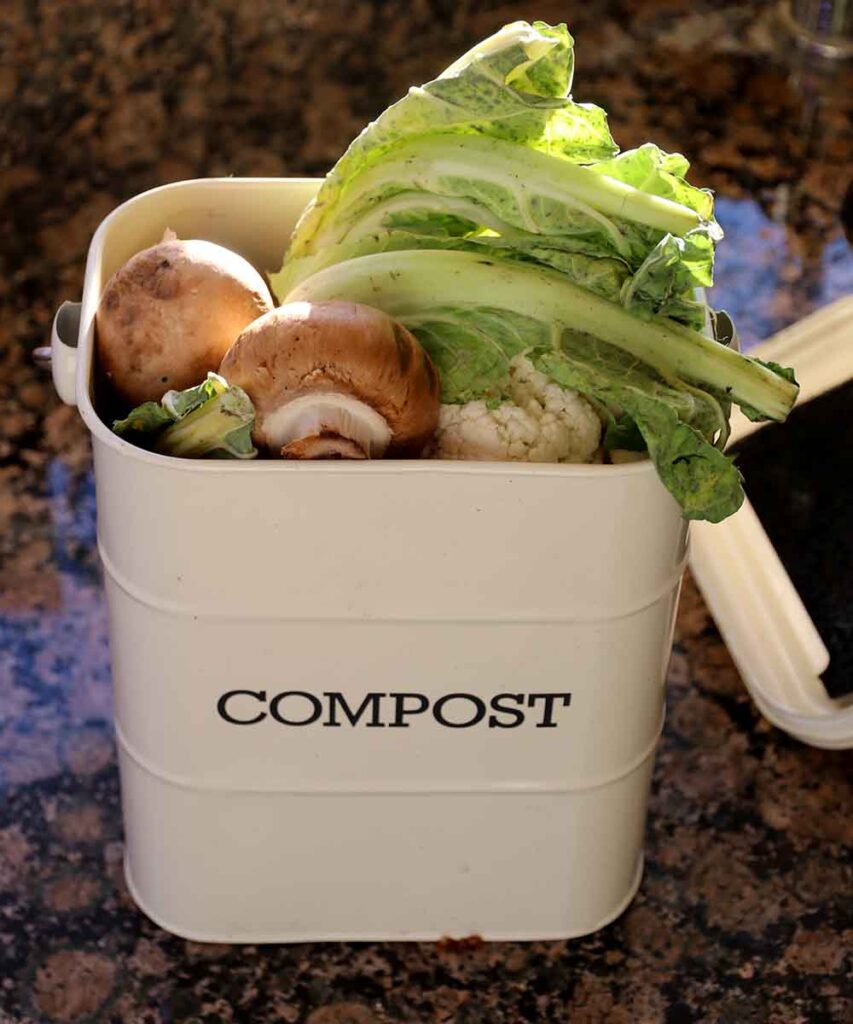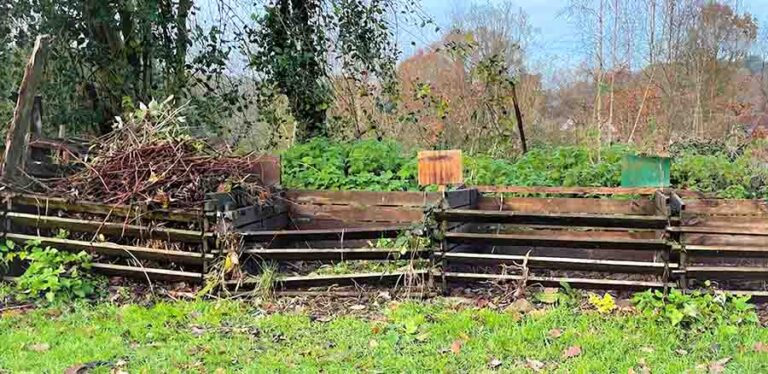Hot Vs Cold Composting

The world of composting has a language all of its own. Green vs brown materials, aerobic vs anaerobic digestion, activators vs accelerants. And of course, hot vs cold composting. In this article, we’re going to look at exactly what hot vs cold composting means, and the pros and cons of each.
Hot vs cold composting
Let’s start by looking at where these terms come from. Most of the decomposition inside a compost heap is carried out by billions of friendly aerobic bacteria. The bacteria turn oxygen from the air and carbon from the organic matter in your compost pile into energy (for them) and heat, which they release. A compost pile which is working very efficiently therefore ends up releasing a lot of heat.
In fact, the interior of a pile with optimum conditions for those friendly bacteria to work in, and enough volume to keep the center well insulated, can reach temperatures in excess of 150°F! In cool weather you’ll see water vapor rising from the top. When it’s frosty, your pile will be the first place to thaw out. If you plunge a metal rod into the center, it will be too hot to touch when you pull it out again.
A less efficient pile, which is decomposing more slowly, will still release heat, but not as much. The heat from the friendly bacteria might even dissipate as quickly as it’s being released, meaning your pile doesn’t feel any warmer than the air around it.

So ‘hot composting’ doesn’t mean applying heat to a compost pile to speed up the composting process. It means a compost heap which is being managed so efficiently that it’s generating a lot of heat. And ‘cold composting’ means letting nature take its course through a compost pile with minimal efforts to promote efficient progress.
How does hot composting work?
We’ve seen how hot composting occurs when the conditions in your compost pile are perfect for helpful bacteria to thrive. It is also known as fast composting, because when bacteria are thriving and multiplying, they digest their way through organic matter more quickly.
Achieving hot composting conditions does require some input from you. The bacteria need:
- Equal volumes of brown and material. Brown materials are rich in carbon, which the bacteria need to make energy. Green materials are rich in nitrogen, and bacteria need these in order to reproduce and spread through your pile. The green and brown materials need to be mixed up, or added in thin layers so the bacteria can access both.
- Lots of surface area. Bacteria work on the surface of your waste organic matter. Chopping up or shredding your material before you add it to the compost pile means more surface area to support more bacteria.
- Air. Anaerobic bacteria need oxygen. You can promote airflow through your heap by adding bulky brown materials like torn-up corrugated cardboard and dead leaves. Or you can incorporate fresh air by digging your whole pile out once a week, and then returning it to your composter.
- Moisture. The contents of your compost pile should feel as damp as a wrung-out dishcloth. In summer this can mean soaking it with a sprinkler occasionally, and in winter it can mean using a cover to stop it getting waterlogged.
You’ll also need a temperature probe for monitoring conditions in the center of your pile. Once the internal temperature has peaked, you’ll need to dig out, turn over, and mix up the contents of your pile. This moves undecomposed organic matter at the edges of your pile into the middle, and triggers another surge of bacterial activity.
Pros and cons of hot composting
The advantages of hot composting are:
- It produces faster results – when conditions are ideal, hot compost can be ready in a matter of weeks.
- The heat kills many types of weeds and pathogens.
- Hot compost piles generally attract fewer pests. Partly because the heat makes them inhospitable to live in, and partly because a pile that’s being constantly monitored and disturbed by you isn’t a very attractive retreat.
- It is absolutely fascinating – gardeners become totally obsessed by it!
On the other hand though:
- It takes up space. Hot composting relies on the outer edges of your heap insulating the interior. So your pile needs to be at least 4 ft x 4 ft x 4 ft. It also works best in batches, so really you need space for two or more bays this size.
- It needs monitoring and hands-on work on an almost daily basis. It’s definitely time consuming – practically like having a pet.
- There’s a risk of fire in summer. The heat at the center of your pile combined with the sun beating down on the surface can result in dry matter on the surface combusting.

How does cold composting work?
Cold composting occurs when a compost pile is left untouched, and breaks down naturally and very gradually over time. It’s also known as slow composting. The bacteria in your pile still need all the same things, but less effort is invested in keeping them constantly in optimum balance. For example:
- Paper can be crumpled rather than shredded, and kitchen scraps don’t need to be chopped up. The surface area is less, but the bacteria will get through it eventually.
- Provided you add the green and brown material in thin layers, and incorporate things like twigs to create air pockets, you don’t need to mix or turn the contents of your pile.
- If your pile is open- topped and standing directly on soil, you can rely on rainfall to keep it moist inside. Sometimes it will get too dry for decomposition to take place, but it will swing back into action after the next shower.
Pros and cons of cold composting
The advantage of cold composting are:
- It’s simple. Hot composting can be intimidating, but cold composting is basically making compost through neglect.
- It takes care of itself. You can recycle your waste and enjoy the benefits of homemade humus, without committing yourself to making a massive effort.
- You can do it in small volumes. Which is great if you don’t have room for a large compost pile, or your yard and kitchen simply don’t produce large volumes of waste.
On the other hand:
- Cold composting is slow. It can take up to two years for a cold compost pile to break down.
- It won’t usually kill off pathogens or weed seeds.
- Rain water running through your pile for two years can wash out lots of the nutrients.
- The bottom of your pile can get compacted, resulting in uneven decomposition, and smelly areas where anaerobic bacteria have taken over from the friendly aerobic bacteria.
- An untended compost pile can be a magnet for pests like rats and flies.

Which should you try first?
Hopefully the pros and cons of hot vs cold compost have already given you a feel for which one will work best for you. They’re equally legitimate ways to improve your green footprint by recycling green waste. And compost from either has plenty of beneficial applications in the garden. If you have enough space, waste material, time, and enthusiasm, hot composting might be a fun experiment for you. If you’re composting in a small space, or already spread thin by other commitments, then it probably makes more sense to start with cold composting. And remember, your first choice isn’t a lifetime commitment! If you don’t love it, you can always try the other one. Or perhaps even try a completely different approach, like worm composting.
Hot Vs Cold Composting – Summary
Hot composting occurs when the conditions inside a compost pile are proactively managed to make decomposition as efficient as possible. It’s hands-on work, but it’s fast. Cold composting is what happens when a pile of organic matter is left to naturally decay. It takes much longer, but it’s more flexible and keeps working even if you forget about it. Let us know which one appeals more to you in the comments box down below!






